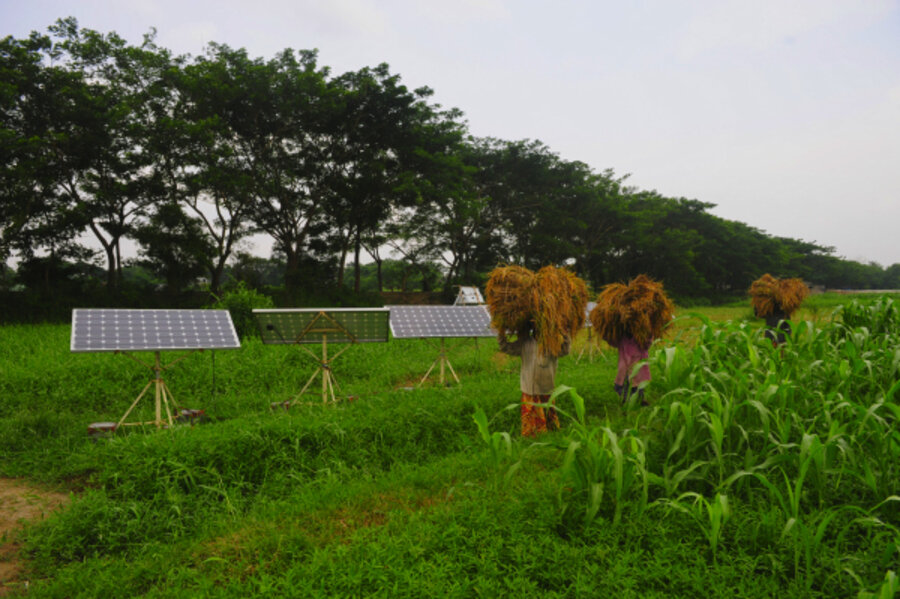Harnessing the sun’s power to make water flow
Loading...
Nearly 2 billion people around the world live off the electricity grid. Lack of access to energy can take a huge toll, especially on food security. Without energy for irrigation, for example, small-scale farmers must rely on unpredictable rainfall to grow the crops they depend on for food and income.
In the Kalalé district of northern Benin, in West Africa, agriculture is a source of livelihood for 95 percent of the population. But small-scale farmers lack access to effective irrigation systems. Women and young girls spend long hours walking to nearby wells to fetch water to irrigate their fields by hand.
The Solar Electric Light Fund (SELF), a US nonprofit, has introduced an innovative solar-powered drip-irrigation system that is helping farmers – especially women – irrigate their fields.
The pilot project launched in partnership with Dr. Dov Pasternak of the International Crops Research Institute for the Semi-Arid Tropics (ICRASAT), has installed solar panels in Bessassi and Dunkassa villages. This cost-effective and environmentally sustainable project is improving food security and raising incomes by providing access to irrigation for small-scale farmers, especially during the six-month dry season.
Farmers are diversifying the crops they grow to include trees and vegetables like tomatoes and lettuce. Their production has increased 10 times. And because women and young girls no longer walk long distances to fetch water, they have more time to participate in agricultural activities.
According to an assessment by Stanford University’s Program on Food Security and the Environment, villagers are not only eating healthier, but they also have year-round access to nutritious fruits and vegetables. And, by selling surplus produce at the local market, women farmers are earning an extra $7.50 per week, which they can use to pay for school fees and medical costs.
SELF is partnering with NGOs, governments, and companies like Dell and Infosat to bring solar electricity to some 1 million people in over 20 countries in Africa, Asia, and Latin America. Its Solar Integrated Development model is designed to enhance self reliance. Farmers participate in determining the community’s priorities for the project. They purchase the solar systems through micro-loans, and SELF provides training and spare parts to install and maintain the panels over the long run.
Often, national electricity development plans focus on expanding centralized grids that rarely benefit the rural poor, a majority of whom are engaged in small-scale farming. But the photovoltaic or solar-powered micro-grids that SELF promotes are benefitting rural communities.
According to SELF’s executive director, Robert Freling, nicknamed "the man who wants to light up Africa," access to electricity is a human right and is essential to achieving the Millennium Development Goals. SELF’s projects are providing electricity to power water purification pumps that improve access to clean water, store vaccines, and support local community enterprises. In Haiti, Rwanda, Malawi, and Lesotho, SELF is working with Partners in Health to install solar panels that help power medical equipment in hospitals.
Janeen Madan is a communications associate with the Nourishing the Planet project.
To purchase your own copy of State of the World 2011: Innovations that Nourish the Planet, please click HERE. And to watch the one minute book trailer, click HERE.
• This article originally appeared on Nourishing the Planet, a blog published by the Worldwatch Institute.
• Sign-up to receive a weekly selection of practical and inspiring Change Agent articles by clicking here.





